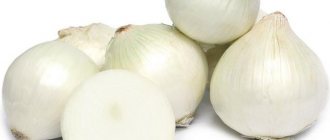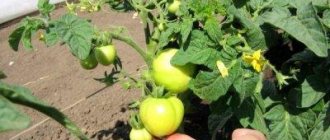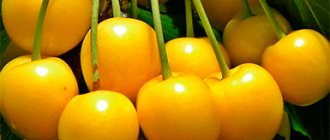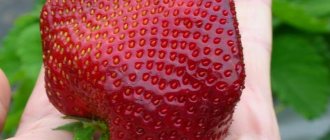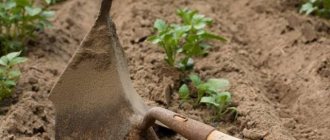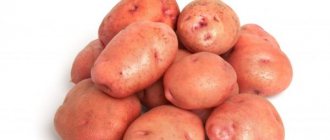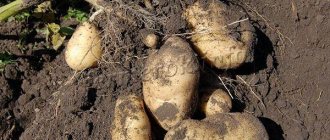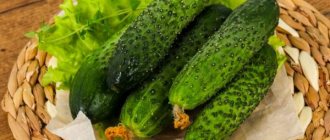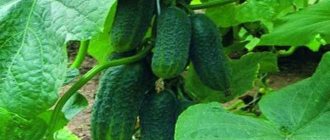To obtain high-quality greens, Parade onions are often grown in open ground or in a greenhouse. The variety was bred by Dutch breeders and is ideal for growing from seeds for greens.
The variety has a number of features, including the absence of a bulb, rapid growth and long-term preservation of appearance without yellowing of the leaves.
Surely many people wanted to grow onions like those sold in stores. To do this, you need to sow a special variety. Parade onions do not need to be pre-cleaned: they can be cut and eaten immediately.
Bow Features
To obtain green feathers, batun is grown. One of the best representatives is the Parade bow. The variety has the following features:
- Stable, high yield. If you follow the rules of agricultural technology, you can get up to eight kilograms of onions from one square meter.
- The mass of the bulbs is no more than eighty grams.
- High feather growth rate.
- The length of the green part reaches sixty centimeters.
- Excellent taste.
- Onions are stored for a long time, remaining fresh and tender.
- The plant is not afraid of frost and can be cultivated in winter greenhouses even at low temperatures.
Onion Parade quickly produces greens rich in vitamins and minerals. The plant can be grown after any crops: potatoes, peas, beans, cabbage.
A special feature of the variety is that it can be cut several times: at least four times.
The plant is characterized by a short growing season - up to seventy days. Between cuts, the feather grows in a little more than a month: the more nutrition and moisture, the faster the onion grows.
When growing a feather, the cut is made when it becomes one and a half centimeters thick and half a meter high. During this period, the plant has the maximum amount of nutrients and essential oils.
Advantages and disadvantages
The Parade onion variety has gained popularity among Russian gardeners because of its undoubted advantages. Those who are familiar with the vegetable first-hand note:
- cold resistance;
- it can be grown both in garden beds and in greenhouses;
- balanced ratio of green and bleached parts of leaves;
- excellent yield;
- long growing season;
- suitability for cultivation on a small and industrial scale;
- delicate onion feathers do not become coarse for a long time and do not turn yellow;
- The baton can be pulled out by the roots or left to grow until autumn, since after cutting it quickly grows with new feathers (3-4 cuttings per season);
- delicious juicy greens are full of vitamins and minerals;
- ability to remain suitable for use for a long time.
There are no disadvantages to the onion variety Parade.
Sowing a variety in exhaust gas
You can grow Parade onions on feathers without seedlings. In this method, sowing is carried out in open ground in early May, choosing an area with a high level of fertility.
Before sowing the seeds, you need to prepare the bed by adding nitrogen fertilizer. It could be cow dung, saltpeter. In the latter case, fertilizer consumption is calculated as follows: 40 grams of nitrate per square meter of land. After incorporating nitrogen into the soil, shallow grooves are made in the prepared bed at a distance of no more than eight centimeters from each other. The seeding depth is no more than two centimeters.
To see how the seeds have fallen, you can sprinkle a thin layer of sand at the bottom of the groove. The seeds are placed individually, at a distance of five centimeters from each other. Some gardeners advise planting two seeds at a time, since onion seeds do not have a high germination rate.
The crops are covered with soil and watered with a watering can. To prevent the seeds from drying out and to germinate faster, the crops are covered with film or non-woven fabric, creating mini-greenhouses for them.
When the onion begins to sprout, the shelter is removed.
How to grow Totem onions
The Totem bow was developed in Japan. All types of batun came from Asia, where they grow early and when the heat sets in, they go into a dormant state. The totem grows well in the Asian part of the Russian Federation. It is suitable for farmers who are choosing which onions to plant to produce green feathers suitable for sale.
You may be interested in: Dates for planting leeks for seedlings in 2021 throughout Russia Dates for planting onion sets in 2021 for feathers and turnips in different regions of Russia Harvesting onions according to the lunar calendar 2021 in Siberia
The totem is recommended for forcing greenery in open and closed ground. In greenhouses, this variety of batun is planted in the ground from February to July and a month later, 1 harvest of feathers is harvested.
In open ground, nigella is sown before winter in order to obtain greenery in the first half of summer. Seeds can be planted in July to provide the family's green needs until late autumn.
Totem belongs to the mid-season varieties. Onion seeds planted in winter begin to germinate immediately after the snow melts. No more than a month passes from the first shoots to the technical ripeness of the feather.
The description of the Totem bow is impressive. It has large, arched, erect leaves of rich color with a waxy coating. The length of the feather is about 50 cm and the width is 1.6 cm. During the summer, a harvest of 4 kg per 1 m2 is obtained. In the photo below you can see the powerful bushes of the Totem onion.
The taste of the pen is mildly pungent, reminiscent of onion greens. The variety is resistant to yellowing of leaf tips, temperature changes and is weakly affected by diseases that affect the ground part of onions.
Important! Manufacturers offer seeds of a hybrid obtained by crossing the Totem variety with local varieties of zoned batun. This allows the cultivated plant to adapt to climate conditions, lack of sunlight and reduce its ability to reproduce.
Growing in OG
When growing Parade onions for greens, it is important to follow the rules of care. They consist of timely weeding, fertilizing, loosening and watering of plants.
The first feeding is carried out when the plant has five true leaves. At this time, the onion must be given phosphorus-potassium fertilizer by diluting a tablespoon of granules in ten liters of water. It is necessary to water the fertilizer at the root, avoiding the solution getting on the onion.
The plant is fed in the evening in dry weather.
Varieties for greens
During the season, you can sow onions in the ground several times, then there will be fresh feathers on the table throughout the spring-autumn season. If there is a heated greenhouse, then in winter there will be greens for cutting. The main thing is not to make a mistake with the choice of variety. To obtain a green feather, there are different types. Let's look at just some of its varieties with original names:
- Parade.
- Totem.
- Slime.
- Soon.
- Leek.
Parade
Onion Parade was bred in Holland and is intended for producing greens. The variety propagates only by seeds. The head is not formed. Instead, a stem and long leaves up to 60 cm grow quite quickly. The color of the feathers is dark green with a slight blue tint.
When growing onions Parade for feathers, summer residents get juicy greens with a pleasant taste. There is no sharp bitterness in the leaves; they retain their presentation for a long time and do not turn yellow. To ensure that greens are supplied to the table regularly, the Parade variety is sown 3 to 4 times per season with an interval between plantings of 2 to 3 weeks.
The feathers are cut at intervals of 38 to 50 days, the productive period of the variety lasts 80 days. Characteristics of the Parade variety suitable for cutting:
- feather length from 50 to 70 cm;
- white stem thickness 10 mm;
- green stem diameter 15 mm.
If all the rules for planting and caring for the Dutch variety are followed, the yield of Parade is 8 kg/m².
Totem
Totem is an excellent Japanese mid-season onion variety grown for greens. It is grown as an annual crop by sowing seeds in open or closed ground. Sowing is recommended to be carried out from February to July in greenhouses, and in open ground they are sown in late autumn and early production is obtained in early summer.
The plant forms a powerful rosette consisting of long, erect leaves, the length of which can reach up to 55 cm. The feather is dark green with a slight waxy coating. By hilling the plantings, marketable stems with a long bleached stem are obtained.
The variety does not form bulbs and produces tender, juicy, non-coarse leaves. From one plant you can get up to 60 g of greens, from one square meter - up to 4 kg. The plant tolerates autumn weather well and does not lie down. The feather has an even color throughout the growing season. The taste of the greens is mild, like a turnip feather.
Slime
Slizun is a productive, frost-resistant variety of onion. There are varieties of different ripening periods. Slizun reproduces by seeds and vegetatively.
| Name | Ripening period | Productivity |
| broadleaf | early ripening | 2 kg/m² |
| A treasure trove of health | early ripening | 4 kg/m² |
| Leader | mid-season | 3.3 kg/m² |
| Green | mid-season | 6 kg/m² |
The largest amount of feathers is produced by the frost-resistant Siberian variety Green. This species can grow in one place for about 6 years; it has good immunity to rust and downy mildew. The plant is characterized by juicy, flat leaves (up to 2 cm wide), twisting in a spiral, with a pungent taste and a light garlic aroma.
See also
Timing for harvesting onions for storage in central Russia and the regionRead
Useful properties of Slime:
- strengthens blood vessels;
- lowers cholesterol;
- increases immunity;
- improves the functioning of the cardiovascular system.
Skoroda's Bow
The birthplace of the Skoroda onion is Germany, it was originally called Schnitt, which translated from German means a cut plant. Summer residents grow this species in their gardens as an annual or biennial crop from seeds, and in gardens as a flowering, ornamental perennial.
Thin tubular leaves containing up to 3% sugars, a rich set of vitamins and phytoncides are used for food. The taste and aroma of the leaves resembles the taste of turnip feathers, but more delicate. The color of the feathers is bright green, maximum length 45 cm, width from 5 to 8 mm.
Skoroda has a powerful underground part: small oblong-shaped bulbs (up to 20 pieces per bush), brownish or violet-red, thread-like roots up to 50 cm long. From the second year, the plant throws out a peduncle from May to June. The colors of the flowers are varied: white, pale purple, lilac. Flowering ends in August.
Leek
Descriptions of leeks were found in ancient tomes; they were grown in ancient times. Despite the difficult climatic conditions of our country, varieties of this onion are grown everywhere as an annual crop. Seedlings - in regions with short summers, seeds in the ground - in the south.
The most popular are early ripening varieties that form useful feathers within 4 months:
- Gulliver.
- Vesta.
- Goliath.
In the first year after planting, the plant grows leaves and a white false stem. This is what they use for food. Only young greens are used.
Growing onions with seedlings
You can get a feather earlier if you plant Parade onion seeds for seedlings in March. To speed up germination, it is recommended to soak them in water. After this, seedling boxes with nutrient soil are prepared. Ready-made soil from any manufacturer intended for growing vegetable crops is suitable for planting.
Grooves about one centimeter deep are made in the box. Leave a distance of five centimeters between the rows. The soil is sprayed with water from a spray bottle.
The seeds are placed one at a time on the bottom of the groove, at a distance of two centimeters from each other. The top of the crops is sprinkled with earth. To speed up germination, the boxes are placed in a warm, bright place, at a temperature of at least 20 degrees, after covering the crop with glass or film.
After germination, the greenhouse is removed and the box is moved to a cooler place where the temperature does not rise above 15 degrees.
When growing seedlings, it is necessary to monitor the soil moisture level: it should not dry out.
Ready seedlings are planted in a permanent place when the threat of frost has passed.
Features of planting and growing
The peculiarity of the Parade variety is that it can be grown in open ground and greenhouses, by seedlings and without seedlings. Depending on the chosen method, the onion requirements for planting times and rules vary. The seedling method is more often used in the northern regions.
Preparing for landing
When planting onions directly in open ground, pre-treatment of the planting material is not required. When sowing seeds for seedlings, they are soaked for a day in a solution of a growth stimulant, for example, "Epin", for speedy germination.
The beds, including those in the greenhouse, are dug deep in the fall and up to 10 kg of organic fertilizers, as well as phosphorus and potassium, are added to the soil. In the spring, before planting, the soil is enriched with nitrogen (30-40 g per 1 sq. m).
When growing seedlings in boxes, the soil is first disinfected - spilled with a 2% manganese solution and covered with a dark film. After a week, the film is removed, the soil is fertilized with potassium chloride (15 g) and superphosphate (20 g) per 1 square meter. m of boxes put together.
Soil requirements
The variety grows well and produces a bountiful harvest in any soil. However, he still prefers light, organic-rich soil with good moisture and air permeability and an acidity level of pH 6-7.
Predecessors
It is best to plant Parade onions after cucumbers, tomatoes, potatoes or legumes.
Dates, scheme and rules of planting
When growing onions without seedlings in open ground, seeds are sown in early May.
Planting pattern:
- Dig up the bed, adding nitrogen fertilizers to the ground (40 g per 1 sq. m).
- Level the soil and make grooves with a maximum depth of 1.5 cm at a distance of 15-20 cm from each other.
- Sprinkle them with sand or chalk and sow seeds every 5 cm.
- Sprinkle the seeds with soil, water a little and cover the beds with a non-woven cloth, which is removed after the seeds germinate.
When planting onions for seedlings, pre-soaked seeds are sown in early or mid-March, following the following scheme:
- Prepare wooden or plastic boxes measuring 60 cm by 40 cm with nutrient soil.
- Make grooves 1 cm deep in it, the distance between which should be 5 cm.
- Spray them with warm water.
- Sow the seeds in the grooves, deepening them to a maximum of 1 cm, cover with soil and spray with water again.
- Cover the boxes with seeds with polyethylene and put them in a bright place at a temperature of +18...+25°C.
- After emergence, remove the film and move the boxes to a cooler place at a temperature of maximum +16°C.
Crops must be regularly watered and fed once every 10-14 days with organic and mineral fertilizers. At the end of May, when the frosts have completely subsided, the seedlings are transplanted into the beds.
Features of cultivation
To achieve the highest possible yield, onions should be planted in well-lit areas protected from the wind.
In the greenhouse, the air temperature before germination should be no lower than +22°C during the day and approximately +18...+20°C at night. When sprouts appear, the temperature is reduced to +12...+15°C for a week, and then maintained at +20°C.
The lighting inside the greenhouse can be varied at first, but after a few weeks of sprouting, the onions need to be lit around the clock, otherwise the greens will be too thin and pale.
Caring for onions involves watering, weeding, loosening and fertilizing. It is important to note that there are some differences in the care of plantings depending on the place of cultivation.
Watering mode
Parade has small roots, so watering is especially important for it. The soil is moistened approximately once a week, making sure that the soil does not dry out more than 3-5 cm in depth.
Loosening the soil and weeding
Weeds take nutrients from the soil, which negatively affects the growth and development of onions. Therefore, the beds are regularly weeded to get rid of weeds. Weed growth can be prevented by mulching the rows with straw, sawdust or agrofibre.
Also, the soil is loosened 1-2 days after watering - this helps improve oxygen access to the roots.
Top dressing
Onions grown in open ground are fed for the first time when consistently warm weather sets in. Plants are watered with an infusion of weeds and other herbs, previously soaked for 2-3 days in 10 liters of warm water.
When 3-5 feathers appear on the sprouts, the soil is fertilized with potassium and phosphorus: 1 tbsp is dissolved in 10 liters of water. l. fertilizers and spill the soil with the resulting solution. The same feeding is required when the plants have 8 leaves.
Important! Feed the plants in the morning in dry weather, making sure that the fertilizer does not get on the feathers.
In the greenhouse, fertilizing is applied as needed. If the feathers turn pale and begin to thin, the plants are watered with urea or “Crystallon” (15 g each) diluted in 10 liters of water.
Disease and pest control
The variety has good immunity and, subject to the rules of agricultural technology and crop rotation, is practically not affected by pests and diseases. Otherwise, there is a risk of developing downy mildew, Alternaria, gray mold and attacks by onion flies and mites.
At the first signs of damage to the plantings, they are treated with fungicides and insecticides.
Important! Onion feathers can be eaten at least three weeks after treatment with chemicals.
Difficulties in growing
During the process of growing Parade, some problems may arise:
- Onions go into hibernation when the air temperature rises to +27°C. To stimulate growth, it must be watered with cool water.
- Drying of the green part and generally poor development of plants with insufficient watering.
- Damage by insect pests when onions grow nearby.
Growing in a greenhouse
Many people grow Parade onions for greens in a greenhouse. In unheated greenhouses, the variety is grown from early spring to late autumn, in heated greenhouses - all year round.
To get a high-quality feather, you need to prepare the boxes and prepare the soil in advance.
Before planting, the soil is treated with a two percent solution of potassium permanganate and covered with a dark film. The boxes are left like this for a week.
After seven days, nutrients are added to the soil: 15 grams of potassium, 20 grams of superphosphate per square meter of boxes placed together. Onions are planted in ready-made containers according to a 5 x 7 cm pattern.
You can grow onions in a greenhouse directly in the beds. This is done on the same principle as growing in open ground, with the only difference being that the plant grows under cover.
Sowing and growing varieties in open ground
There are three ways to grow spring onions:
- dividing the bush;
- sowing seeds in the ground;
- sowing into the ground through seedlings.
Perennial onions develop flower stalks provided they are periodically exposed to low temperatures. These will produce seeds that can be planted in the next area. The exception is the tropics and the equatorial belt - there, due to the lack of sub-zero temperatures, onions do not enter the next vegetative cycle and do not form flower stalks, therefore they reproduce only by division.
To divide, the bush must be at least 3 years old. Sowing seeds is possible annually. Sowing time is spring. Seeds can be sown several times per season at intervals of several days.
The main terms for growing the crop:
- planting: April - July;
- flowering: May - August;
- greenery harvest: July - August.
If onions are being planted for greens, plant seeds every 4 weeks and you'll have a great herb on your table every day . You can cut greens at any time without waiting for them to fully ripen.
Sowing seeds in a greenhouse
Seeds are sown in a greenhouse according to the following rules:
- In early spring, seeds are disinfected in a weak solution of potassium permanganate. Then they are soaked in Epin solution (two drops per hundred grams of water). They will not get fungal infections after this procedure.
- Then prepare the boxes for sowing seedlings. They are filled with soil and disinfected. Next, grooves are made to a depth of no more than two centimeters. During this procedure, you should carefully monitor the depth, trying to make it uniform. Otherwise, the seedlings will sprout unevenly.
- The furrows for crops are moistened. As soon as all the water has been absorbed, sowing is carried out, placing the seeds one by one on the bottom of the groove. It is better to leave two centimeters between the seeds.
Propagation from seeds
Onions are a frost-resistant crop. Planting can begin about one month before the last spring frost.
Cold cannot harm the seeds, so they will begin to germinate only when weather conditions become favorable.
How to grow Parade onions from seeds:
- First you will need to prepare the seeds. To do this, you need to make a weak solution of manganese and soak the seeds in it for about a day. So it is recommended to disinfect them. After this, the seeds should be soaked in Epin solution. Dilute two drops in half a glass of water. This will prevent fungus from appearing.
- Before sowing the seeds, you can pour boiling water over the soil. This will get rid of fungi and pests.
- Therefore, grooves will need to be made in the beds. Their depth should be about one and a half centimeters. If the soil is heavy, then the depth is no more than one centimeter. The main thing is to make the depth the same for all furrows. This way the onion will rise evenly. The row spacing should be at least 15 centimeters.
- Then the furrows will need to be watered. Parade onion seeds are sown in moistened holes, keeping a distance of one and a half centimeters from each other. To clearly see the achenes, you can first sprinkle the grooves with chalk or sand.
- In order to ensure that the seeds attract moisture well, sprinkling them with soil will need to lightly compact the soil.
- It will be possible to sow even two achenes in one hole. This way you will definitely get sprouts. The germination rate of onions from seeds is approximately no more than 80 percent.
You can find out about onion varieties for growing from seeds here.
Caring for onions in a greenhouse
Growing Parade onions in greenhouses is not a difficult task; the main thing is to observe temperature conditions, lighting, watering and fertilizing correctly.
In the greenhouse, until seedlings appear, it is necessary to maintain a temperature of at least 20 degrees. As soon as sprouts appear, it is reduced to fifteen degrees. The plant is kept in this mode for a week. After hardening the onion, the temperature is again raised to twenty degrees.
For the proper development of a plant, it is not enough to observe only the temperature regime; lighting is also important. Two weeks after germination, seedlings are provided with round-the-clock lighting. If this is not done, the feather will turn out pale and thin.
Onions, like other plants, need feeding. If the feathers turn pale and thin, this is a signal: the plants do not have enough nutrition. Onions are fed with nitrogen fertilizer, diluting fifteen grams of saltpeter per 10 liters of water. Fertilizing is carried out at the root, preventing the solution from getting on the leaf.
Plants in the greenhouse are watered once a week. First use warm water with a temperature of at least 25 degrees. Afterwards the temperature is reduced to twenty degrees. Watering with cold water, as well as overwatering, should be avoided, as this can cause the bulb to rot.
Reviews
Reviews about Onion Parade are only the most positive. This plant is valued by gardeners for its growth rate, excellent feathers, high taste and commercial qualities. The Parade onion variety is often used to produce feathers for sale.
Many gardeners have come to the conclusion that it is necessary to sow the plant as early as possible, while there is no heat and scorching sun. There are complaints that the seeds did not germinate well. This is due to the fact that sowing was carried out in May. In some regions, at this time the sun is already scorching, drying out the soil. In order for the seeds to hatch, they need to retain moisture, and for this it is recommended to plant them earlier - in mid-April. This way you can avoid too frequent watering by maintaining soil moisture at the desired level.
There are opinions that it is better to plant using seedlings. This way, you can sow seedlings in boxes in early spring, and with the onset of warmth, take them outside: the seedlings will be hardened, and night frosts will not destroy the sprouts.
Some summer residents grow onion seedlings in a greenhouse, using several crops spaced two weeks apart. Thus, summer residents get more harvest and do not wait for the feather to grow back. Caring for a new plant that is planted in fresh soil is much easier than trying to preserve a plant that has already produced a harvest.
Description and characteristics of the bow
Batun is a perennial onion that is grown for greenery and also as an ornamental garden plant. Unlike other varieties of onions, it does not form a bulb : there is only a slight thickening of the stem, from which children are formed. After a couple of years, thickets of thick green stems appear at the planting site.
The flowering of the batun occurs in June.
It is self-pollinating and produces both male and female flowers .
The pedicels are very beautiful and thanks to them the plant can serve as a decorative plant. Characteristics of the Parade variety:
- originator: Dutch company BEJO ZADEN BV;
- basic information: evergreen, herbaceous perennial; which takes up little space and can be grown in a vegetable garden or flower garden;
- ripening period: mid-early, 60 days;
- leaves: cylindrical basal, erect, 40–60 cm long;
- color: blue-green;
- aroma: garlic;
- yield: very high, up to 4.2 kg/m²;
- Resistance: resistant to bolting and bulb diseases;
- Application: goes well with various vegetables, egg dishes, salads and dressings, fried poultry, stews, casseroles and baked fish; used to add flavor to food.
A batun is a bow on a feather.
Among the advantages of the variety, it is noted that it is characterized by stable yield and excellent appearance of the leaves. They do not turn yellow and grow quite quickly. In addition, such onions have a high content of vitamin C. As for the harvest, during the entire growth period, from spring to autumn, the greens are cut several times.
The batun has no significant disadvantages ; just keep in mind that if you need bulbs, you need to choose a different variety.
Important! After the thermometer shows +27
°
C, the spring onion will go into hibernation. He can't stand this kind of weather. To encourage it to continue growing, water the crops with cold water.
Seeds
To get a good onion harvest, you need to carefully select seeds. They must be packaged by an agricultural company with a good reputation, and also have a long shelf life. Those packages that have a short shelf life may not sprout, which is a waste of time and money.
Among the trusted agricultural companies offering Parade, the best are considered to be: “Search”, “Aelita”, “Garden and Vegetable Garden”. According to reviews, these companies offer seeds with a high percentage of germination, and given that onions themselves have a germination rate of no more than eighty percent, the performance of these companies (78-88%) is excellent.
When deciding to grow onions, it is important not only to choose the right manufacturer, but also to choose good, nutritious soil. It is ideal if the gardener makes up “tasty” soil on his own, taking sand (1 part), humus (1 part), well-rotted manure (two parts), leaf soil (1 part). In such soil, onions grow quickly, producing beautiful dark green feathers more than 50 centimeters long.

